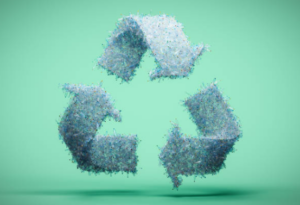Environmental Impact and Animal Safety

Glitter, with its dazzling and whimsical allure, has long been a staple in the beauty and fashion industry. From sparkling eyeshadows to shimmering nail polishes, it adds a touch of magic to our looks. However, beneath the glimmer lies a dark side that often goes unnoticed—the environmental impact and potential harm to animals caused by conventional glitter. In this blog, we’ll delve into the glitter industry’s environmental footprint, the impact on marine life, and explore eco-friendly alternatives that prioritize sustainability and animal safety.
The Environmental Footprint of Conventional Glitter
Conventional glitter, often admired for its dazzling appearance, conceals a significant environmental concern—its primary composition of microplastics. These tiny particles, measuring less than five millimeters, are predominantly made of polyethylene terephthalate (PET), a form of plastic. The microplastics used in glitter production are derived from the same material as single-use plastic bottles, contributing to the larger plastic pollution crisis.
When applied as makeup or in nail products, glitter particles are easily released during application or removal, finding their way into water systems. The non-biodegradable nature of these microplastics poses a considerable threat to the environment. Once in water bodies, they persist for an extended period, contributing to the growing menace of microplastic pollution.
The journey of glitter from our makeup brushes to the world’s oceans sets off a chain of ecological consequences. Microplastics, including glitter particles, become pervasive in marine environments, threatening the delicate balance of underwater ecosystems.
As glitter enters water bodies, it undergoes photodegradation due to exposure to sunlight. This process breaks down the glitter into smaller fragments, exacerbating the issue of microplastic pollution. The marine life, particularly filter feeders like plankton, mistake these microplastics for food. This misidentification begins a troubling journey up the marine food chain, impacting a myriad of species.
The ingestion of microplastics by marine organisms can lead to various adverse effects, including:
- Disrupted Reproductive Systems: Studies suggest that exposure to microplastics can interfere with the reproductive systems of marine life, affecting fertility and population dynamics.
- Digestive Problems: The accumulation of microplastics in the digestive tracts of marine organisms can cause blockages, malnutrition, and other digestive issues.
- Bioaccumulation of Toxins: Microplastics have a propensity to absorb and accumulate toxic substances present in the surrounding water. As these particles move up the food chain, the concentration of toxins increases, posing risks to larger marine species, including fish and marine mammals.
The environmental impact of conventional glitter extends beyond marine life. Once microplastics infiltrate water bodies, they become challenging to remove due to their small size and ubiquity. Traditional water treatment processes are often ill-equipped to filter out such minuscule particles, allowing microplastics to persist in freshwater systems.
Moreover, these microplastics can also be transported through the atmosphere, contributing to air pollution. The fallout of glitter particles from the air into soil poses additional risks to terrestrial ecosystems, potentially affecting plant life and, consequently, the animals that depend on them.

The Toll on Animal Safety
The traditional production of glitter often involves testing on animals to ensure the safety of the product for human use. This practice has long been a source of ethical concerns within the beauty industry. Small animals, frequently rabbits and rodents, are subjected to potentially harmful substances to assess the effects of glitter on their skin and eyes.
Animal testing raises serious ethical questions about the treatment of living beings in the name of cosmetic safety. The use of animals in testing procedures involves the potential for pain, distress, and even long-term harm.
In recent years, there has been a growing movement within the beauty industry to adopt cruelty-free practices. Brands are increasingly recognizing the ethical implications of animal testing and are striving to eliminate this practice from their product development processes.
As consumers become more conscientious about the ethical dimensions of beauty products, the demand for cruelty-free alternatives to traditional glitter has gained momentum. Several brands are now offering glitter products that prioritize animal safety while maintaining a commitment to sustainability.
- Biodegradable Glitter: One notable alternative is biodegradable glitter, crafted from plant-based materials like eucalyptus cellulose or algae. This sustainable option eliminates the need for animal testing during its production and aligns with cruelty-free principles.
- Vegan Certification: Brands producing cruelty-free glitter often seek vegan certification, indicating that their products are free from animal-derived ingredients and have not been tested on animals. This certification provides consumers with confidence in their choice of glitter products.
- Transparent Labeling: Ethical brands committed to animal safety are transparent in their labeling, clearly stating their cruelty-free and vegan status. This transparency empowers consumers to make informed choices that align with their values.

The Rise of Biodegradable Glitter
Biodegradable glitter stands as a beacon of hope in the quest for sustainable and eco-friendly alternatives to traditional glitter. Derived from natural sources such as eucalyptus cellulose or algae, biodegradable glitter offers a host of environmental advantages.
- Sustainable Sourcing: The raw materials used in biodegradable glitter are often sustainably sourced, reducing the environmental impact associated with extraction or cultivation. This stands in stark contrast to the petroleum-based production of traditional glitter.
- Reduced Ecological Impact: The biodegradable nature of this glitter addresses the persistent environmental concern posed by traditional glitter. Unlike its plastic counterpart, biodegradable glitter breaks down more efficiently, minimizing its impact on ecosystems and reducing the risk of long-term pollution.
- Decomposition in Natural Environments: Biodegradable glitter is designed to decompose in natural environments, facilitated by microorganisms that break down the material. This ensures that, over time, the glitter transforms into harmless substances, leaving behind minimal traces.
Beyond its environmental benefits, biodegradable glitter aligns with the increasing demand for cruelty-free beauty products. Manufacturers of biodegradable glitter often prioritize cruelty-free practices, eliminating the need for animal testing during the product development phase.
Biodegradable glitter manufacturers are conscious of ethical considerations, choosing production methods that avoid harm to animals. This commitment to cruelty-free practices aligns with the broader shift towards ethical and responsible beauty choices.
Many biodegradable glitter products proudly display vegan certification, indicating that they are free from animal-derived ingredients. This provides consumers with a clear indication that their glitter choice is aligned with ethical and cruelty-free principles.
Biodegradable glitter has proven to be versatile, offering a sustainable solution across various beauty and cosmetic applications. Whether used in makeup, nail polish, or body products, biodegradable glitter provides the same dazzling effect as traditional glitter without the environmental repercussions.
- Makeup: Biodegradable glitter is a popular choice for makeup enthusiasts who seek both vibrancy and environmental responsibility. From eyeshadows to highlighters, brands are incorporating biodegradable glitter into a range of cosmetic products.
- Nail Products: The versatility of biodegradable glitter extends to nail care, with eco-conscious consumers opting for sustainable alternatives in nail polishes and embellishments.
Brands that champion biodegradable glitter are often transparent in their labeling, providing consumers with clear information about the sustainability and eco-friendliness of their products.
Ethical brands proudly display certifications that verify the biodegradability and environmental consciousness of their glitter. These certifications serve as a valuable tool for consumers seeking products that align with their values.
In addition to certifications, brands often engage in educational initiatives to inform consumers about the benefits of choosing biodegradable glitter. This transparency empowers consumers to make informed decisions that contribute to a more sustainable beauty industry.
The rise of biodegradable glitter is not isolated to individual brands; it reflects a broader industry shift towards sustainable practices. Collaborative initiatives and partnerships between brands, manufacturers, and environmental organizations further promote the adoption of biodegradable alternatives.
Beauty industry associations and organizations often spearhead awareness campaigns about the environmental impact of conventional glitter. These initiatives encourage brands to consider sustainable alternatives and consumers to make eco-conscious choices.
Collaborative efforts in research and innovation drive the development of new materials and production methods for biodegradable glitter. By sharing knowledge and resources, the beauty industry can accelerate the adoption of sustainable alternatives.

Embracing Sustainable Beauty Practices
As consumers become more environmentally conscious, there is a growing demand for transparency and sustainability in the beauty industry. Brands that prioritize ethical and eco-friendly practices, including the use of biodegradable glitter, are gaining favor among consumers who seek products aligned with their values.
Educating consumers about the environmental and animal welfare implications of traditional glitter is crucial in fostering a shift towards more sustainable choices. Beauty influencers, bloggers, and industry leaders play a pivotal role in disseminating information and promoting eco-friendly alternatives to conventional glitter.
While the glittering world of beauty has long captivated us with its sparkle, it’s essential to recognize the environmental and animal safety challenges associated with conventional glitter. By understanding the environmental footprint, marine life impact, and potential harm caused by traditional glitter, consumers can make informed choices that align with their values.
Embracing eco-friendly alternatives, such as biodegradable glitter, is a step towards a more sustainable and ethical beauty industry. As consumers, influencers, and industry leaders collectively prioritize sustainability, we can contribute to a glittering future that sparkles without leaving a dark legacy on our planet and its inhabitants. Ultimately, the beauty choices we make today have the power to shape a more compassionate and sustainable tomorrow.

